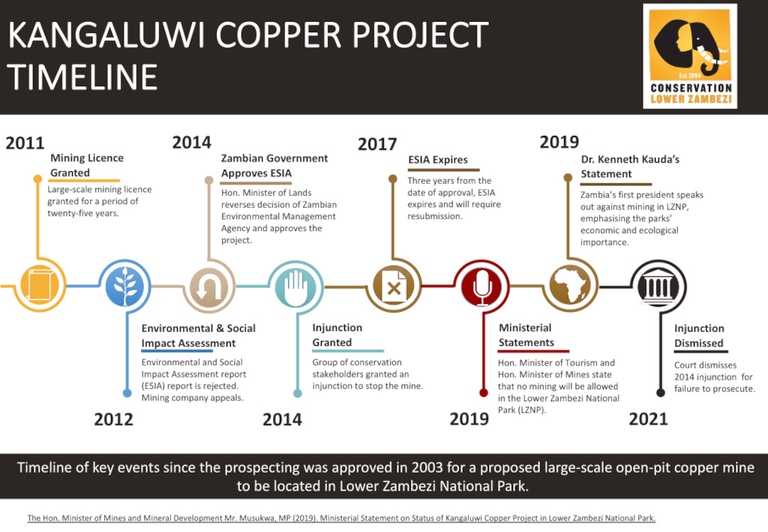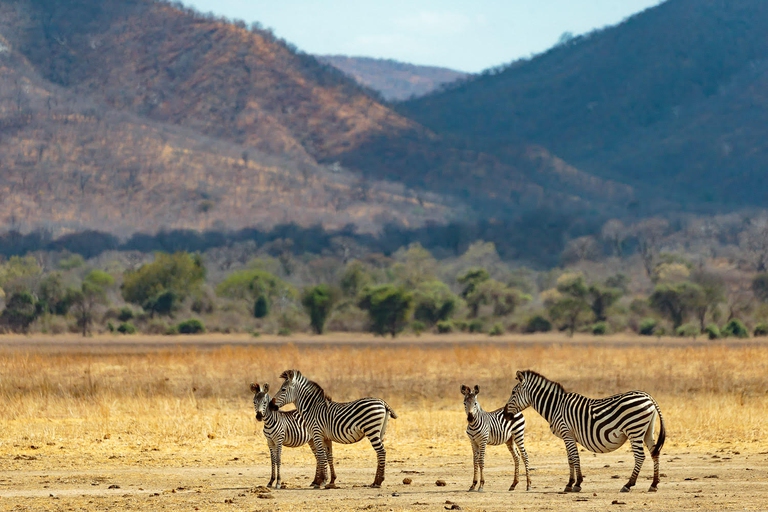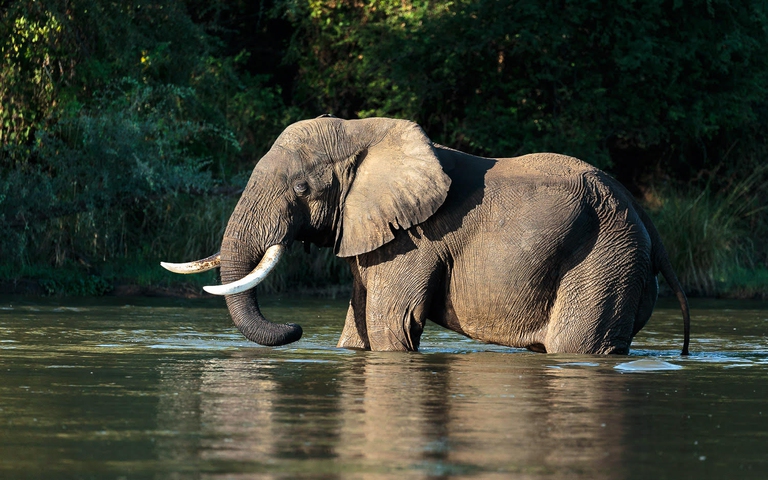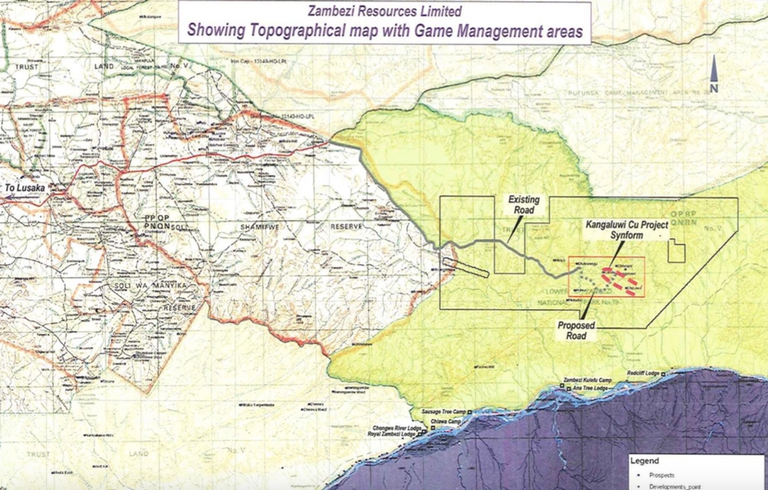
The Copernicus service has released data for the first eleven months of 2025: global warming is set to come close to last year’s record.
A huge open-cast copper mine in the heart of the Lower Zambezi National Park threatens to obliterate the ecosystem and millions of livelihoods.
After prospecting minerals for two decades in the heart of the Lower Zambezi National Park (LZNP), the Zambian government has approved a controversial proposal to open the Kangaluwi open-pit copper mine. The proposed mine is located in a protected area, 174 kilometres southeast of the capital Lusaka, which is currently a haven for endangered wildlife and other natural resources. For years, environmental groups have been battling against the proposed mine. Sadly, the final appeal to the Court of Appeal of Zambia was dismissed in a judgement delivered by Justice Ngulube in February 2021, possibly marking the end of any legal challenges open to those looking to stop the mining operations. Critics say that the judge dismissed the case based on legal technicalities and ignored public interest.
On the other hand, a consortium of Conservationists has strongly opposed the opening of a mine in the National Park. They assert that an internationally important protected area, designed to preserve critical ecological processes, will be irreversibly damaged in return for a 15-year short-term economic gain, coupled with eroding the park’s tourism industry and conservation reputation. The activists have urged the newly elected Zambian President, Hakainde Hichilema, to urgently intervene and halt the proposed mine.
“We are appealing to His Excellency the President as we know he fully understands that the large environmental, social and financial costs our country will incur if this mine is allowed to go ahead will be catastrophic. We believe mining activities should be restricted to happen in mining areas of the country and should not be allowed in tourism and wildlife conservation areas that have their own ecological and economic value”.
In Zambia, mineral exploration shows no signs of slowing down. The latest example, from the Lower Zambezi National Park (LZNP), is being carried out by Mwembeshi Resources Limited. This subsidiary of Zambezi Resources Ltd, an Australian Stock Exchange Listed Company, was granted an exploration licence covering a 240sqkm area in the Lower Zambezi National Park, a haven for 124 animal species, 403 bird species, and 54 aquatic species that attract tourists from all over the world. Two major rivers, the Chakwenga and Mushika, as well as several streams, flow through the proposed mining area into the Zambezi River.
The proposed mine is the first in Zambia which involves a foreign-owned company with a poor mining track record being permitted to develop a giant mine inside a national park. In March 2012, Mwembeshi Resources Limited submitted an Environmental Impact Statement (EIS) which was strongly rejected by the Zambian Wildlife Agency (ZWA). In rejecting the EIS, ZWA said, “the proposed mining site is not suitable for the nature of the project because it is located in the middle of a national park and thus intends to compromise the ecological value of the park, as well as the ecosystem”.
Later that year, Mwembeshi Resources quickly submitted the rejected EIS to the Zambia Environmental Management Agency (ZEMA), which subjected the EIS to a series of public hearings and consultations. After a huge uproar, coupled with petitions by various stakeholders, the agency rejected the EIS.
Environmental activists have rubbished the data which was presented in the Environmental Impact Statement (EIS) and the subsequent documentation, saying it is insufficient to meet EIS requirements and objectives, adding that the company failed to detail the scope of the mine, the life of the mine, or its potential social, economic and environmental impacts. These findings strongly reinforce the decision of the Zambian Environmental Management Agency to reject the mine proposal. Critically, all community and stakeholder concerns remain unaddressed.
“One particular concern is that since the EIS submission in 2012, the nature of the underlying copper resource has been changed by Mwembeshi Resource Limited from copper sulphide to copper oxide, yet no new EIS documents have been supplied nor any announcements made to Zambian authorities or stakeholders,” asserted environmentalist Dr Kellie Leigh. “The economic value of the project, its full scope, and its potential impacts remain unclear due to the extremely poor quality and inconsistency of the information provided by the Company to date. There is no convincing nor even coherent economic argument for allowing this mine to proceed.”
An independent expert review of the EIS revealed a high likelihood of contamination events that were dubiously or deliberately omitted by the Company and sadly, to date have not been addressed. This puts Zambia’s natural resources, ecosystem services, and biodiversity at significant risk by the recently approved mine. In addition, modelling figures suggest that the project is not only economically unviable, but it will result in a net loss of jobs for local communities and will generate a financial loss over the first seven years of operation of a minimum of US$13 million, coupled with severe water pollution. The proposed site for the mine lies within the boundaries of the national park, an International Conservation Union (IUCN) category II protected area in South-Eastern Zambia, on the Zambezi River, in close proximity to the Kafue and Luangwa Rivers.
The main political argument advanced by Zambezi Resource Limited about the Kanguluwi Mine is that the mine will create jobs for local community members, particularly those living in the Luangwa town region. Shockingly, the highest estimates of the number of jobs promised by the Company are for just 300 employees, as stated in its Project EIS. However, while the company outlines that local Zambians will be employed, the company also clarifies that: “Whilst the philosophy commences with engaging personnel from the local and regional communities, it is acknowledged that this will not be possible or feasible in all cases”. This leaves options open for the Company to employ skilled workers from other areas, since a philosophy is not a clear commitment.
While both the Mines and Minerals Development Act (2008) and the Zambia Wildlife Act (1998) allow for mining inside national parks, unfortunately, there is no policy or legislative framework to guide implementation, monitoring, and mitigation of impacts, nor to ensure full site rehabilitation as outlined by the Mineral Resources Development Policy (2013) and the Mines and Minerals Development Act. Sadly, the documents have no criteria set by which to evaluate whether each mine proposed within a protected area should be permitted.
Meanwhile, a petition against the mine has already reached over 36,044 signatures. The petition organisers hope to receive as many signatures as possible to put pressure on the Zambian government to reconsider and revoke the permission to mine the Lower Zambezi. The petitioners have strongly declared that they will not be silent until the strong arm of greed and kick-backs has been completely vanquished and the proposal of mining for copper in the precious Lower Zambezi is stopped.
Siamo anche su WhatsApp. Segui il canale ufficiale LifeGate per restare aggiornata, aggiornato sulle ultime notizie e sulle nostre attività.
![]()
Quest'opera è distribuita con Licenza Creative Commons Attribuzione - Non commerciale - Non opere derivate 4.0 Internazionale.
The Copernicus service has released data for the first eleven months of 2025: global warming is set to come close to last year’s record.
The European Council and Parliament have reached an agreement on the European Commission’s proposal to deregulate new GMOs. But farming, organic agriculture, and environmental organizations are calling for it to be stopped.
Several hundreds of women in India have rejuvenated vast stretch of forest land through a unique method of guarding the forest.
The solution developed by the Italian startup Agri-E enables on-site bioethanol production, promoting energy self-sufficiency for farms.
South African court dismisses a major lawsuit by 140,000 Zambian women and children against Anglo American for Kabwe lead poisoning. A setback for affected communities enduring the lasting impact of lead contamination.
Controversial African land deals by Blue Carbon face skepticism regarding their environmental impact and doubts about the company’s track record, raising concerns about potential divergence from authentic environmental initiatives.
Majuli, the world’s largest river island in Assam State of India is quickly disappearing into the Brahmaputra river due to soil erosion.
Food imported into the EU aren’t subject to the same production standards as European food. The introduction of mirror clauses would ensure reciprocity while also encouraging the agroecological transition.
Sikkim is a hilly State in north-east India. Surrounded by villages that attracts outsiders thanks to its soothing calmness and natural beauty.












